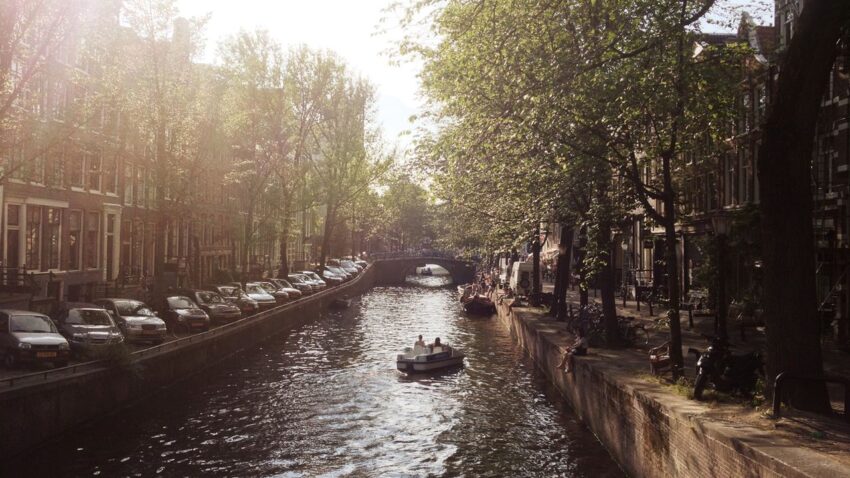Day 1: The Canal Ring: Amsterdam’s concentric girdle of Golden Age canals, now a UNESCO heritage site, qualifies as one of Europe’s most historically intact neighborhoods. Start your hike through a pretty much untouched 17th- and 18th-century landscape at the Saturday morning al fresco flea market on the Noordermarkt square, facing the Prinsengracht, where Amsterdam’s tribe of bohemians pick through one enormous Dutch attic (think old Delft vases and vintage country lace). Running alongside is a farmers’ market, and plenty of Dutch boys slicing through rounds of gouda and edam the size of tractor wheels. If that piques the appetite stop for a break at Café ‘t Smalle a few blocks south, a classic Amsterdam brown café (named for the patina that builds up on walls after several smoky centuries) where you can drink home brewed jenever, the juniper-flavored Dutch gin, and pop shrimp croquettes on a canal-side terrace. Then head five minutes further south along the canal and join the snaking line at the Anne Frank House, where the Frank family hid behind a sliding bookcase from the Nazis—surviving for two years and a month until their ultimate betrayal. Anne could hear the bells from the neighboring Westerkerk church while she was in hiding, and they still clang over the surrounding Jordaan neighborhood, where the canals are seamed with gabled houses and single-themed boutiques. Then circle back to the Noordermarkt, where Bordewijk Restaurant, facing the square, sources much of the spanking-fresh market produce that brightens its Dutch-meets-Mediterranean plates; the sweetest langoustines and artichoke ravioli are among the signature dishes.
Day 2: The Museum Quarter and Vondelpark: Amsterdam’s newly renovated Museumplein rates as one of the continent’s most concentrated pockets of world-class art. Framing the long square from north to south are three recently refurbished galleries. Start at the epic Rijksmuseum, which reopened in 2013 after a ten-year renovation that cost many millions to complete. It shows. The new atrium entrance hall glows with light and the reformatted galleries complement the peerless collection of Golden Age Dutch masters, including Vermeer’s luminous Kitchen Maidand Rembrandt’s The Night Watch, a lesson in fierce civic pride. Grab a classy souvenir (Delft and Makkum tiles!) in the expanded gift shop and then head south along the Musemplein, stopping first at the Van Gogh Museum, which includes examples of the artist’s early Dutch landscapes, and then at the Stedelijk Museum, where the contemporary collection runs from Pollack and pop (including the inevitable Warhol) to Jeff Koons. The Museumplein itself, recently replanted as a grassy piazza–cum–public space, features a spot for performances and concerts. But the surefire al fresco show is a few blocks west at Vondelpark, flush with outdoor cafes, an open air theater, a rose garden, and skate-rental vendors. Then head back toward the Museumplein and grab a table (reservations safest) at the long-standing Sama Sebo, where the cuisine of Indonesia, once a Dutch colony, is the local version of comfort food. Spring for the signature rijstaffel, a snaking buffet of small dishes that offer a keyboard of flavors, spicy to sweet to nutty. The cautious can just settle for superb satay. End the day with a performance at Het Concertgebouw concert hall at the south end of the Museumplein, where the acoustics are famously perfect and the stellar Royal Concertgebouw Orchestra does justice to both classical and modern composers.
